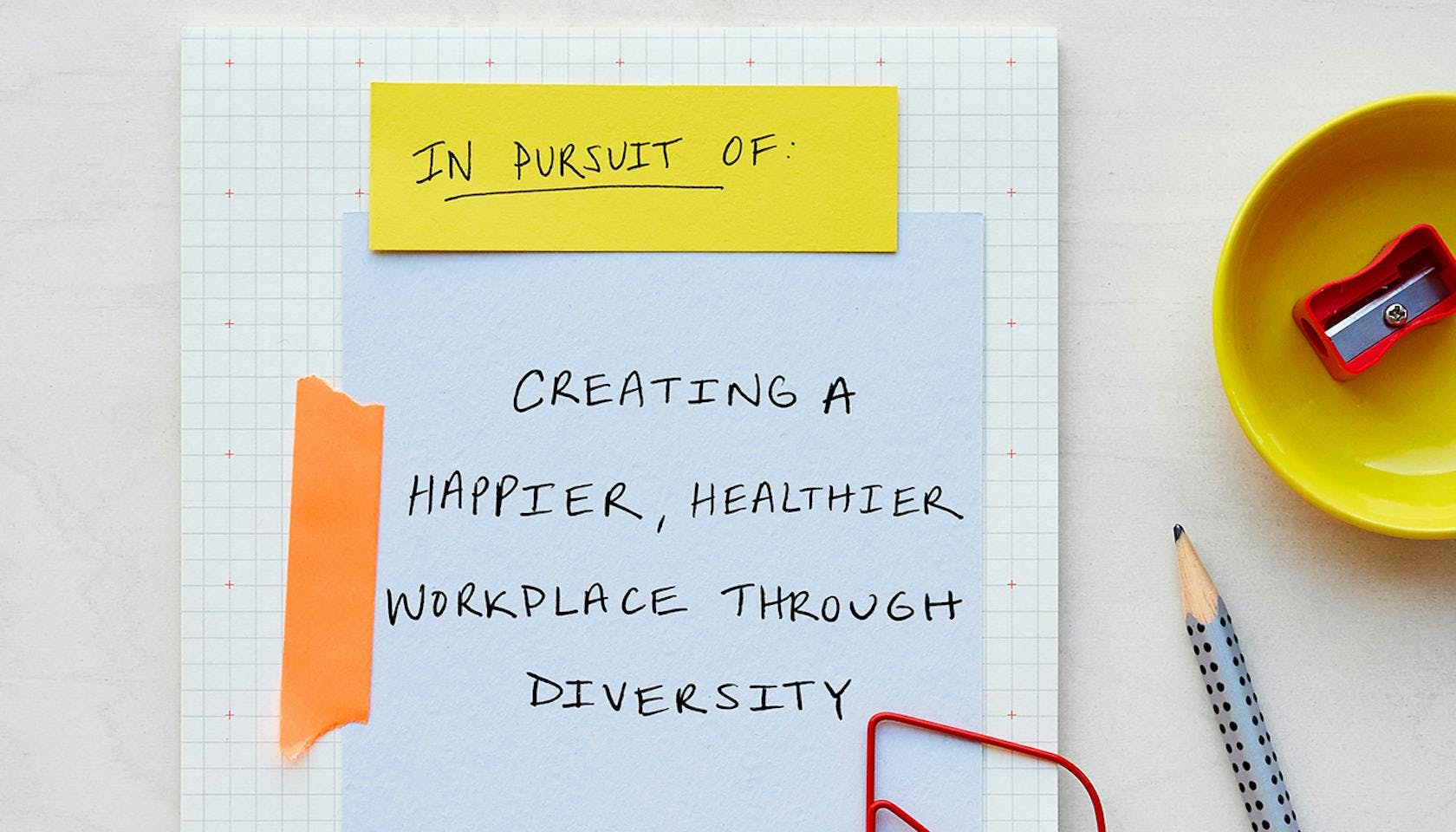October 16, 2018
7 Ways Diversity Creates a Happier, Healthier Workplace

Benefit #1: Your creativity blossoms.
One of the benefits to having a more diverse workforce is that team members often challenge each other more. Ever notice how people with similar backgrounds tend to agree with each other on many topics? And surewhile being similar may lead to a frictionless working environment (which has its upsides), harmony should not be the sole goal in a work setting. For better problem-solving and creativity, businesses should seek out a wide variety of ideas and viewpoints. Creating a space that is inclusive and where each individual is seen, heard, and supported as their true self fosters teamwork, productivity, and increases overall creativity, says Max Masure, a workplace and gender inclusion business coach and co-founder of Argo Collective.
Benefit #2: It makes cultural sensitivity the norm.
Lots of workplaces suffer from an overabundance of consensus, says Kim Stiens, founder and CEO of Ranavain and a hiring consultant and career concierge. Rather than rigorously developing ideas to be better and work for different kinds of people and situations, people go with the flow and avoid challenging one another. At its worst, such a narrow slice of humanity can lead to the sort of corporate blindness that can result in serious public relations snafus. Consider advertisements criticized for cultural appropriation and insensitivity, or controversial slogans. Mistakes like these could be challenged, if not entirely prevented, in a group meeting of diverse employees who speak up.
Benefit #3: Profits go up.
Diversity benefits not just company culture, but can also increase profits. A study showed that inclusive teams made better business decisions 87% of the time, and cut the number of meetings needed in half. If time is money, thats a lot of dollars.
Benefit #4: It promotes intersectionality.
The term intersectionality was coined in the 1970s by UCLA law professor and civil rights activist Kimberl Crenshaw, whose work initially focused on how black women are subjected to sexism from men and at the same time encounter racism from the white feminist movement. Intersectionality means instituting systems that address the various barriers to equality that different people face, and calls attention to groups that are disenfranchised on many levels by different groups. For instance, a black disabled woman or an older trans woman may be faced with multiple layers of discrimination and daily challenges. Intersectionality is the awareness of these layered biases.
Benefit #5: Everyone gets to work in a safe environment.
Diversity helps create a work environment where people can express themselves fully and are encouraged to contribute. That fear of being judged not on your work but on who you are is understandable. Folks from historically oppressed communities won't make the best contributions they can unless they feel safe and authentic in doing so, says Stiens. Its only within safe, inclusive atmospheres that staff can work to the best of their ability, rather than educating people or resorting to minimizing themselves for the comfort of others. When people feel supported and protected from discrimination, theyre free to do what they were hired to do.
Benefit #6: Employees work better.
Theres a distinct benefit to employee happiness; one study found that happy workers are 20% more productive. Fostering an inclusive environment is more than just making sure employees are happy, too. Intersectionality includes making sure that everyone has a voice and that they are safe from violence both emotional and physical. Everyone deserves to feel safe in the workplace and to be their authentic self.
Benefit #7: It benefits alleven those on top.
When developing a company culture of open dialogue, both managers and workers may have to sometimes receive harsh feedback. It's much easier to teach people to share their ideas than it is to teach people to short-circuit their ego and take criticism gracefully, but both are essential to not only getting the most out of your people but helping them get the most out of their role, says Stiens. The upside? Managers learn how to manage better.
Sound appealing? Many companies have room for improvement when it comes to embracing diversity and intersectionality. Masure shares a handful of small, tangible steps that businessesand their employeescan take to make their workplaces more inclusive. Well be taking note, too.
For all team members:
- Suggest that employees add their pronouns to their digital profiles, such as email signatures, LinkedIn profiles, and Slack.
- Talk with employees about the importance of their language, both verbal and written. For instance, the use of Hey guys! may have become second-nature, but it can be exclusionary. A better practice is a gender-neutral option such as Hey everyone/team!
- Make space for underrepresented people to speak for themselves during meetings: if you see someone quiet during a meeting, ask them what they think.
For management:
- Have interviewers from diverse backgrounds meet with potential applicants during the hiring process, including people who represent the identities of interviewees. This is important to prevent hiring processes and protocols that may inadvertently discount some people and to prevent bias.
- Clearly communicate accommodations throughout job listings and to new hires; for example, ADA compliant, all-gender restrooms, childcare coverage/accommodations, etc. These accommodations help to level the playing field of opportunity for all qualified applicants.
- Take actions that create space for underrepresented people to speak for themselves during meetings, such as giving everyone in the room an opportunity to talk.
-Fiona Tapp